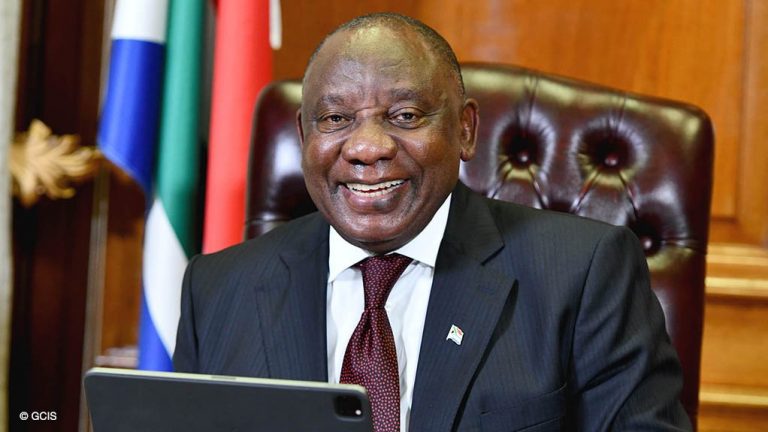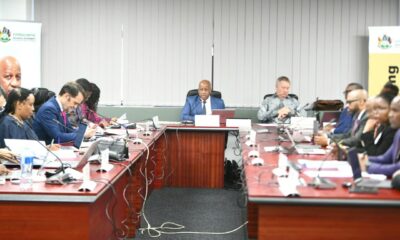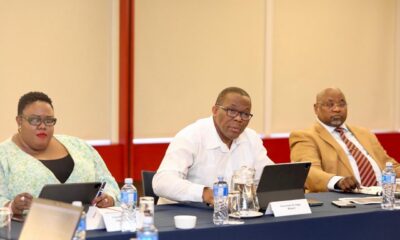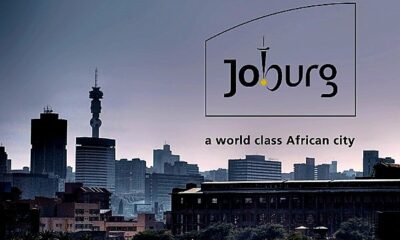Business
South Africa’s R5.8 Trillion Lifeline: Can Private Money Save a Failing State?

The country is at a tipping point. With public funds drained, can the private sector step up before it’s too late?
If South Africa wants to avoid a full-scale collapse of its infrastructure and basic services, it needs to pull off one of the most ambitious investment drives in its democratic history: R5.8 trillion by 2030.
That’s not a typo. It’s not a distant forecast. It’s an urgent financial red flag and it comes from the African Development Bank’s (AfDB) latest report on the country’s economic outlook.
But here’s the catch: the government doesn’t have the money. Not even close.
Where We Are Now: A Country Running on Fumes
South Africa’s roads are riddled with potholes, public hospitals are overburdened, trains and freight lines are barely functioning, and intermittent blackouts are a normal part of life.
For most citizens, especially those living in under-served townships and rural areas, poor service delivery isn’t an abstract concept, it’s the water that doesn’t flow from taps, the lights that won’t turn on, the ambulance that never arrives.
And behind this breakdown is a single, sobering truth: South Africa is broke.
According to the AfDB, the country’s economy has limped along at an average growth rate of just 0.8% over the past 15 years, far behind the 4.5% norm seen in other emerging markets. This sluggish growth has slammed the brakes on tax revenue, even as government spending has ballooned.
The result? A debt-ridden state now spending over R1 billion every day just to pay off interest on its loans.
The R5.8 Trillion Question
The AfDB’s estimate between R4.5 trillion and R5.8 trillion is what it would take to stop the bleeding and restore core infrastructure by 2030. That covers:
-
Revitalising roads, rail, and ports
-
Expanding and modernising energy infrastructure
-
Addressing the country’s looming water crisis
-
Improving access to healthcare and education
And just to accelerate needed reforms in the electricity and logistics sectors alone, we’d need R228.8 billion every year until the decade ends.
Public Sector: All Tapped Out
Ordinarily, a chunk of this investment would come from state-owned giants like Eskom, Transnet, and SANRAL. But these institutions are drowning in debt. Many are barely functioning.
The government’s financial position is equally dire:
-
Budget deficit: 5% of GDP (and rising)
-
Debt-to-GDP ratio: 76.1%
-
Revenue: Down to 27.1% of GDP
-
Spending: Up to 32.1%, thanks to bloated wages and spiralling debt costs
It’s been nearly two decades since South Africa last recorded a budget surplus. Since then, the economy has slid into stagnation while government spending has soared.
International investors are noticing and not in a good way.
Private Sector: The Sleeping Giant
Here’s the twist in the story. While the state is scraping the barrel, South Africa’s private sector is sitting on over R1.4 trillion in cash, money that could be deployed into local infrastructure, if the environment felt less risky.
The AfDB says that creating the right conditions through regulatory certainty, political stability, and economic reforms could unlock a significant chunk of this capital.
But investors have been wary. They’ve watched years of mismanagement, corruption, policy flip-flops, and energy crises. Now, confidence must be rebuilt.
Why This Matters to Every South African
This isn’t just about spreadsheets and bond yields. It’s about:
-
Whether children will have schools with electricity and running water
-
Whether patients can reach hospitals with functioning equipment
-
Whether goods can move across provinces without being delayed for days
The AfDB’s warning is clear: without massive investment, the infrastructure that keeps South Africa running will continue to crumble and with it, the very foundations of our economy.
Public Reaction: Frustration and Fatigue
On the ground and across social media, South Africans are not surprised, but they are exhausted.
One Twitter user wrote, “We’ve heard this for 10 years. More money needed. Where does it go?”
Another posted, “The private sector is ready, but the government isn’t serious about cutting red tape or corruption.”
There’s a sense of déjà vu: big numbers, bigger promises, little follow-through.
A New Social Contract?
Maybe this is the moment for a rethink.
South Africa’s recovery won’t come from the state alone. It’s going to take partnerships, between government, business, labour, and communities.
Imagine:
-
A logistics sector rebuilt with private freight operators
-
Solar and wind projects driven by corporate investment
-
Hospitals modernised through public-private health infrastructure deals
It’s not a silver bullet, but it’s a start.
A Country on the Brink, Not Yet Broken
South Africa isn’t doomed. But it is dangerously close to a point of no return.
The money is there, just not where it used to be. If leaders can get the policy mix right and restore confidence, that R1.4 trillion sitting in corporate accounts could become the engine that powers a true national recovery.
The next five years aren’t just about fixing potholes. They’re about whether South Africa can build again or whether the cracks become canyons.
{Source: Daily Investor}
Follow Joburg ETC on Facebook, Twitter , TikTok and Instagram
For more News in Johannesburg, visit joburgetc.com



























